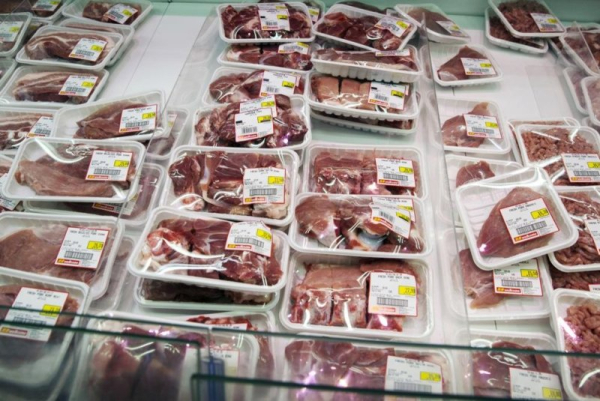

Brazil has an annual quota of 65,005 metric tons for exporting fresh beef to the United States duty-free. This quota is usually filled quickly — it occurred on Jan 17 this year, File Photo by Jerome Favre/EPA
Starting Wednesday, the United States is to impose an additional 50% tariff on Brazilian beef, adding to the existing 26.4% duty on exports that exceed quota limits — bringing the potential total rate to about 76.4%.
Brazil has an annual quota of 65,005 metric tons for exporting fresh beef to the United States duty-free. This quota is usually filled quickly — it occurred on Jan 17 this year, but strong demand and low production costs made continued shipping economically viable with the 26.4% duty.
But now, with the new 50% tariff tacked on, that steep increase is expected to sharply reduce imports from Brazil and prompt U.S. buyers to shift sourcing to other Mercosur trade bloc nations, including Argentina, Uruguay and Paraguay, to meet demand.
In the first half of 2025, Brazil exported more than 165,000 tons of beef to the United States. Under the new trade conditions, much of that volume could be redirected to China — its second-largest export market — potentially setting off a domino effect on the other Mercosur countries.
“If Brazil sends a large volume of beef to China, that country will obviously stop buying some from Argentina and Uruguay,” said Fernando Herrera, president of Argentina’s Association of Exporting Producers.
Argentina was the only Mercosur country to reduce its beef exports in the first half of the year, down 15% compared to the same period in 2024. In contrast, Brazil’s exports rose 13%, Uruguay’s increased 4% and Paraguay’s grew 12%, according to a report from the Rosario Board of Trade.
Paraguay aims to double its shipments to the United States starting in September, with projections of up to 8,800 tons per month.
“Even though we’ll pay a higher tariff, we’ll end up in a better position than Brazil because our beef is more similar to theirs,” said José Carlos Martin, head of Paraguay’s National Animal Health and Quality Service.
Uruguay, meanwhile, is benefiting from increased demand and record-high prices driven by domestic consumption in the United States.
“We’re experiencing an extraordinary moment in the global beef market, led by prices in the United States,” said Uruguayan consultant Roberto Vázquez Platero, who noted a shift in export destinations.
“Previously, 50% of our exports went to China and just over 20% to the United States. That has changed. The U.S. has gained importance, and in recent weeks, Europe has also played a stronger role, with average prices ranging from $7,000 to $8,000 per ton,” he told El País, a newspaper in Uruguay.
Brazil remains the world’s largest beef exporter, accounting for about 23% of global exports — nearly 3.3 million tons. Argentina contributes roughly 8.4% to global beef trade, while Uruguay and Paraguay, though smaller in scale, are still significant players. Uruguay exported more than 750,000 tons in 2024, and Paraguay showed strong growth, shipping more than 385,000 tons in the first half of 2025.
Mercosur exports account for between 30% and 35% of total global beef exports.
Looking ahead to the second half of the year, the global beef market faces continued uncertainty amid shifting trade dynamics, according to a report from the Rosario Board of Trade.
“August is shaping up to be a key month for several strategic moves that could take shape based on the trade policies adopted by both the United States — at the global level — and China, with a direct impact on the beef market,” the report said.
Despite potential trade tensions, the global beef market remains strong, driven by growing demand and record-high trade volumes for the second consecutive year.
According to the OECD-FAO Agricultural Outlook 2025-2034, this trend is expected to keep upward pressure on prices in the short and medium term, as supply remains limited while major producing countries — such as those in Mercosur — navigate a transitional phase and work to expand their cattle herds. Only once production increases will the market begin to stabilize, the report notes.